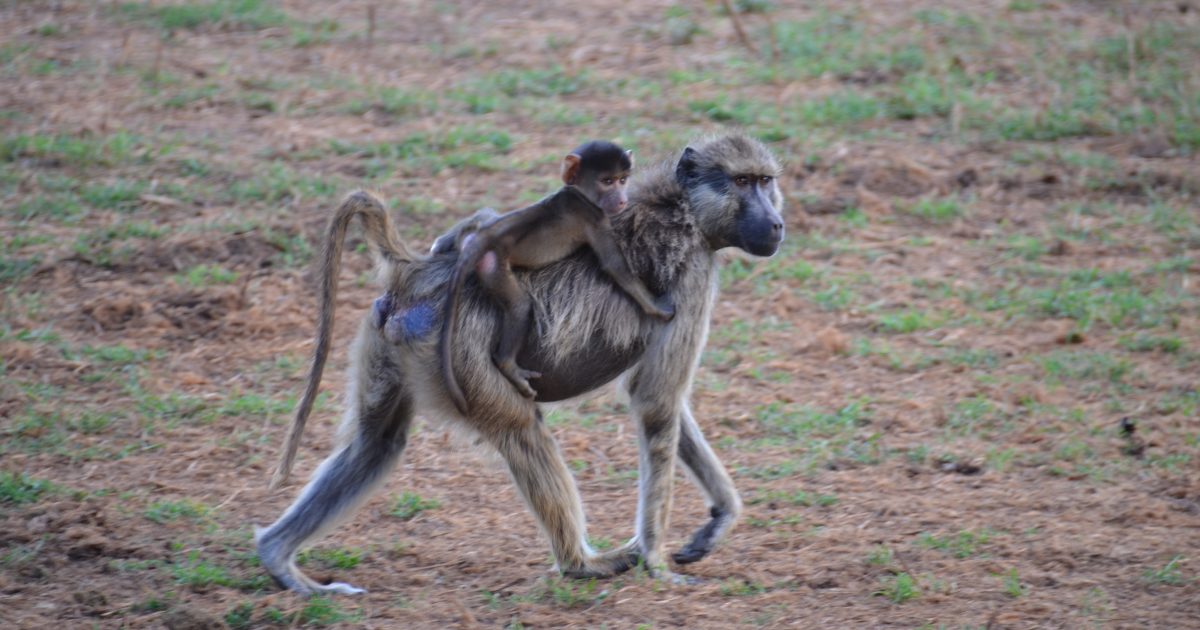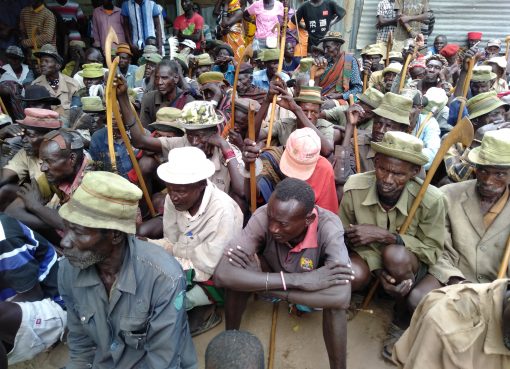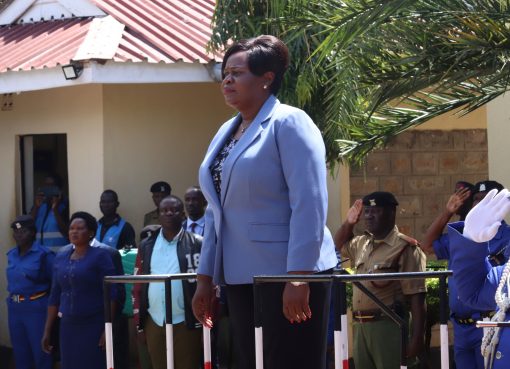In dozens of villages at the edges of the vastly scenic Taita Hills plains, hordes of pillaging primates have been invading farms and destroying crops with unprecedented impunity.
For years, bands of belligerent baboons have terrorized villagers in Wundanyi Constituency prompting an exasperated area MP Danson Mwashako to trigger public giggles after he demanded Kenya Wildlife Service (KWS) administer compulsory family planning pills on these troublesome apes.
A week ago, the Principal Secretary for Wildlife prof Fred Segor toured Wundanyi where the baboon issue generated a heated debate. The PS admitted the primates were a headache and promised they would be relocated. Most farmers were left wondering how the sneaky primates will be captured and where they will be relocated.

However, a group of environmentalists from the Voi Rotary Club and Mvosa Water Resource Users Association (WRUA) believe their conservation efforts to rehabilitate Voi River could offer a lasting solution to this perennial menace.
Mr Zacchaeus Maganga, the Chair of Water Resource Users Association (WRUA) believes that planting trees along the riverbanks of the 210-km long river holds the key to this problem.
He says that the trees would eventually create a dense canopy and a network of protected zones that would link up Taita Hills to the vast Tsavo East National Park thus creating a corridor for the primates to go back to the park.
“This initiative can help increase the forest cover and create a corridor for the baboons to return to Tsavo East National Park,” says Maghanga who is also the Vice President of Rotary Club in Voi.
For decades, human encroachment, gradual loss of forest cover along the riverine zones and drought has confined hundreds of baboons and monkeys into the green habitats up the hills.
Though cold to a point of being chilly, the Taita Hills, classified as water towers, have become a choice home for baboons due to the abundance of food, fruit trees and dense forest cover. This has resulted in a never-ending battle between local residents and troops of baboons that constantly raid farms in search of anything edible.
Villages that border forests including Iyale, Mshomoto, Vuria and Kinyesha Mvua have borne the brunt of monkey mischief. They include Lushangonyi, Choke, Mchundi and Shomoto. Other areas plagued by the monkey problem include Kishushe, Wesu, Fumu and Nyale.
As part of the Rotary Club’s broad strategy to promote environment conservation in the degraded lower zones, the group has embarked on a mission to plant trees along Voi River. The group will plant indigenous and fruit trees to help stabilize the eroded banks and eventually restore the indigenous trees that used to flourish along the river. The project aims to have all degraded areas reforested.
The first phase will include planting 200 seedlings in a two-acre fenced-off piece of land that is piloting the project. Once the trees are planted and have grown, the project will be rolled out to other areas forming a continuum of forest cover.
“If this river had a canopy all the way up, we could enable movement of the baboons from the hills all the way to the park. They are stuck up the hills and we are trying to give them a corridor so that they can move down without disturbance,” he said.
Wildlife corridors, also known as eco-passages, are made up of unbroken strips of green corridor that create highways from one habitat to another. These wildlife areas are designed to keep local migratory animal species from encroaching human populations in areas of high interaction between the two.
They reconnect habitats so that wild animals can migrate, intermingle and respond to climate change despite the kind of human activity in the area. This gives them the ideal space they need in their quest for food, mating and migration.

Gradual habitat loss and human development over the years across Tsavo has separated these primates from the park, limiting their movements across the landscape. This could be mitigated by creation of wildlife corridors as foreseen by these particular groups of conservationists.
Mr Andrew Mwata, Chairman of Adopt-A-River Programme, recognises the need for collective efforts between the local administration, the community and relevant stakeholders in the environmental sector to protect the ecosystem. “The whole conservation subject greatly depends on all stakeholders including locals to jointly work together. We are hopeful that with this arrangement, we will continue sensitizing the locals on the importance of environmental conservation and its future impacts,” he said.
Rotary Club District 92-12 under which the project falls target to plant one million trees this year. Other agencies that have been focusing on rehabilitating the Voi River Eco-system include Kenya Forest Services (KFS) and local conservation groups.
KFS County Conservator Charles Kuria says that the agency has been creating awareness on farmers not to cultivate on riverbanks to avoid destabilizing the river. The farmers, he added, have also been urged to plant indigenous trees on their farms to increase the forest cover.
“The awareness on conservation has been going on. The farmers and the residents know the benefits of tree planting and conserving the environment,” said Kuria.
However, challenges abound. Lack of water, vandalism of the fences and destruction of tree seedlings by livestock grazing by the riverside remain key threats facing the reforestation project along the riparian zones.
Environment experts have warned that Voi River could be flowing towards extinction with the water volume sharply declining over the years. This has been attributed to human activities along the river banks, unregulated sand harvesting and brick making.
During the dry season, the river dies forcing animals that depend on it to move into ponds near local settlement for survival. Collective actions to protect wildlife migration routes could protect them thus limiting the constant human-wildlife conflicts.
Conservation models need to include strategies to reduce human-animal conflicts and County governments through combined conservation efforts coming up with measures to protect the people as well as the wildlife.
Human disruption and fragmentation of natural wildlife habitat remain to be the greatest threats to biodiversity and conservation efforts globally. Even as such local groups continue to come up with possible solutions to human-wildlife conflicts, there has been lack of research into the actual benefits of wildlife corridors.
By Raphew F Mukuyia




